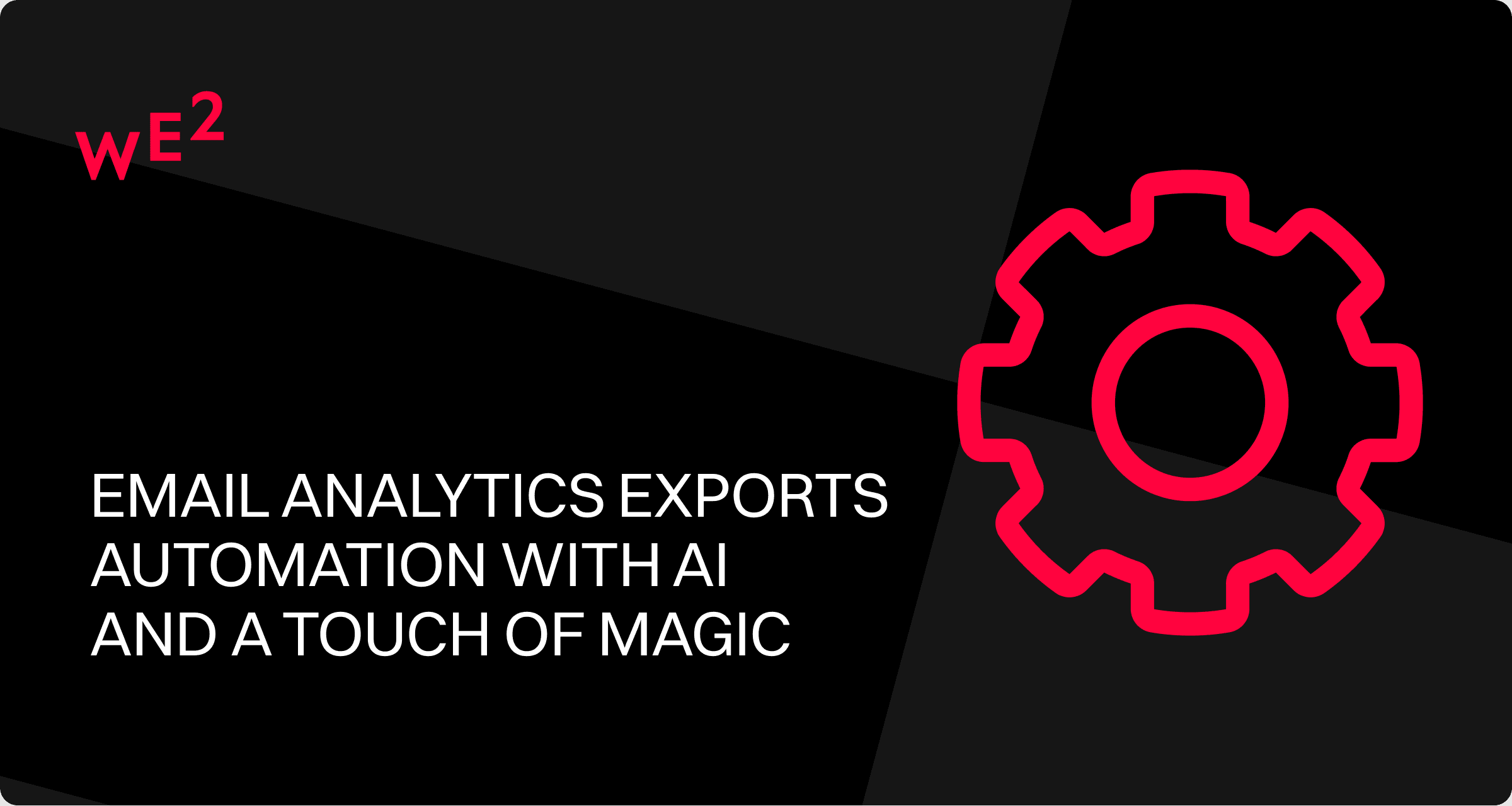
16.10.2025
Saved 30+ hours a month by automating reports in Salesforce with n8n and a sprinkle of magic
Our solution didn’t just improve the process—it completely killed one of the most boring routine tasks. In this article, we’ll demonstrate how we automated email analytics exports, saving the team over 30 working hours per month. Spoiler: no coding required (well, almost).
The problem: manual work everyone hates
One of our clients is a major pharmaceutical company with a highly segmented audience. Every month, we prepare 30+ emails and manually export performance stats for each three days after sending. We use Salesforce Marketing Cloud— a complex system that few people have heard of, but those who have usually go crazy when it’s mentioned.
Collecting analytics for WhatsApp messages is a time-consuming process: each time, we have to write a script to extract clicks, opens, and errors. It’s a bit faster with emails, but it's basically the same story—still an unnecessary waste of resources. Once the data is received, we manually transfer it to Google Docs,replacing the values in a pre-made template.
The process itself is quite time-consuming: it takes an hour to prepare a single report. There’s also a risk of human error. Moreover, campaign specialists are often overloaded with higher-priority tasks, which is why deadlines are missed. Just imagine the manager’s frustration: the client is waiting for the data, the team is rushing, and you’re frantically trying to find the typo in this huge spreadsheet.
We dreamed of statistics being automatically uploaded—directly to Google Docs in the correct format, exactly three days after sending. So that managers wouldn’t have to spend extra effort on reminders, and campaign specialists wouldn’t have to deal with repetitive, mechanical tasks. So that analytics would magically be collected in the spreadsheet, allowing us to dedicate the freed-up resources to strategic goals.
The solution: Salesforce Automation + n8n + Google Apps Script
To optimize the process, we leveraged the built-in features of Salesforce Automation: the system automatically generates the statistics export three days after the email is sent. We integrated SQL queries with date-based filtering and configured export to SFTP.
After that, n8n comes into play—an open-source platform for task automation. It allows you to connect different services and systems so they can exchange data without human intervention. We had purchased an n8n license long ago to export analytics, and now this tool was just what the doctor ordered.
The algorithm works as follows:
- The platform automatically connects to SFTP and downloads the necessary files
- It analyses the content and organizes it according to a predefined structure
- It saves the processed data into convenient folders on Google Drive
After that, Google Apps Script runs: it retrieves information from Google Drive and generates reports in Google Docs based on a template. Now, project managers don’t need to keep reminding campaign specialists about the upload and collect statistics manually—reports are generated automatically and always on time.
The results: 30+ hours saved and happier managers
All in all, we found a solution that automatically collects statistics exactly three days after sending. This is a significant achievement, as we managed to eliminate three factors at once: excessive uploads, lengthy processes, and a complex system. Thanks to AI, we were able to significantly optimize our resources. It took us 13 hours to implement the solution, and it paid off in only two weeks.
Even if the upload on your project takes only 5–10 minutes and all you need is to press the “Download” button, we still recommend optimizing this process. Why do manually what can be automated?
Before: 1 hour for report preparation, 30+ man-hours a month, stress, mistakes.
After: 0 hours for report preparation—the system runs automatically, and the manager only spends time reviewing and adding a few comments. The freed-up resources can be dedicated to strategy and creative work.
Why is this solution not just a quick fix, but a carefully thought-out system
- Data is automatically exported and incorporated into the report, eliminating the risk of human error
- The roadmap can adapt to any type of messaging (messengers, email, SMS) and integrates with other systems, not just Salesforce
- Project managers can quickly access and deliver statistics to clients on time, independent of colleagues’ workload, while campaign specialists can focus on strategic tasks
- n8n doesn’t require coding knowledge, so managers can set up complex integrations themselves
- Report automation works at the business logic level and is not limited to simple data collection
What’s next? Bringing this success to other projects
This case helped us explore new possibilities with Salesforce. It’s important to highlight that Salesforce Marketing Cloud (SFMC) is inherently complex: many processes are created and configured by the client, which imposes certain limitations and makes implementing automations more challenging.
Nevertheless, we managed to work around these limitations and establish a streamlined process. Now we can showcase our expertise to clients and offer effective solutions, even taking into account the specificities of SFMC.
The solution can be easily scaled to regular team reports as well as other projects—thanks to the ready-made templates. Additionally, we’ve gained practical experience with n8n and can now create integrations between different systems, adapting to the client’s requirements.

READY TO START?
Fill out the form, and we’ll reach out shortly to discuss your project.

